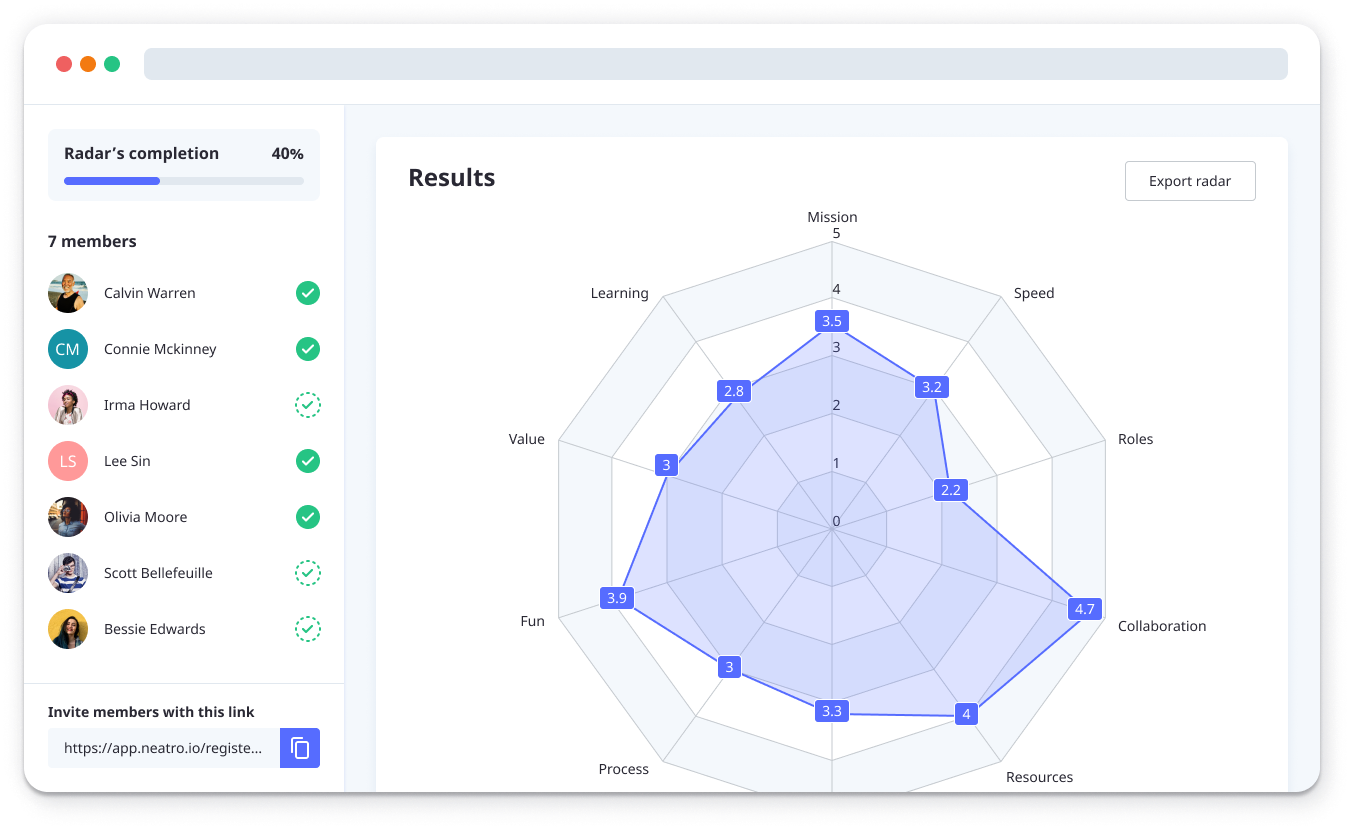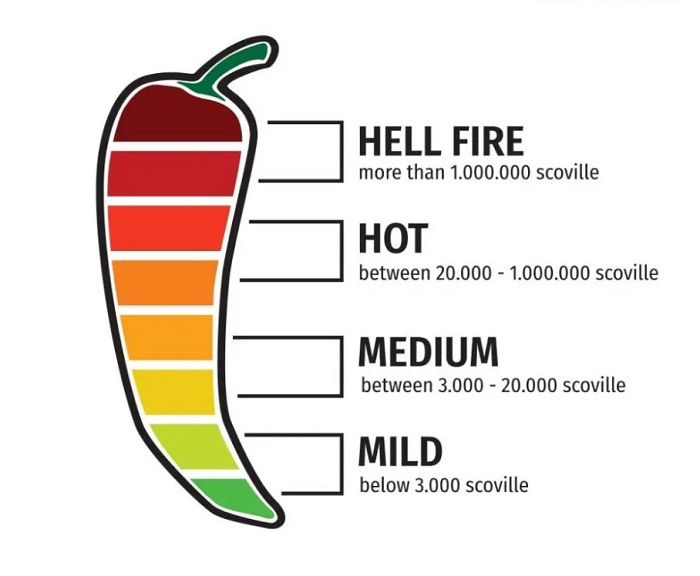The Best Check-In Activities for your Team Retrospectives


I can hardly remember the last time I facilitated a retrospective without starting with a check-in activity.
A check-in allows me to gauge the team's mood, manage members' expectations, and increase participation during the retrospective. All of this for just a few minutes of preparation. That's why I constantly use them to kick off meetings.
We will explore what a check-in activity is and how to integrate them into your retrospectives.
In this article, we’ll tackle the following topics:
What is a check-in activity? Why is it useful ?
I probably won’t surprise anyone by saying that it’s common for team members to push ahead, heads down, to deliver their final pieces of value as a sprint comes to an end. They then come into the retrospective with a completely saturated mental space, still preoccupied with what they've been working on over the past few days.
The check-in activity aims to create a buffer space, allowing each member to express how they are arriving at the retrospective. It’s a brief and interactive exercise done at the beginning of the meeting, with the following key benefits:
Establishing a climate of trust: It allows team members to express their emotions and concerns, creating an environment where everyone feels safe to share their ideas and needs.
Increasing engagement and participation: By giving everyone the opportunity to speak from the outset, the check-in ensures all voices are heard, including those who might be more reserved or tired.
Setting the tone: The exchanges during the activity will give you an excellent indication of how to facilitate the rest of the retrospective. Adjust the pace of your facilitation to meet the needs raised by team members.
“Check-ins allow people to shift gears and become aware of what’s on their minds. A check-in can give you an idea of the group's mood.”
- Derby, Larsen, Horowitz, Agile Retrospectives (Second Edition)
What is the difference between a check-in and an icebreaker?
In a slightly different approach, icebreaker activities are generally more playful or creative, designed to lighten the mood and encourage friendliness among team members.
In summary, check-ins aim to establish an emotional connection and facilitate communication, while icebreakers primarily seek to engage participants in an informal way, making the environment more enjoyable. Of course, both can be combined, and it’s even recommended!
How to choose and use the right check-in in 3 steps
To maximize the effectiveness of check-in activities, it’s crucial to understand your team’s needs. As a facilitator, you’ll need to be able to identify the team’s mood throughout the sprint.
Step 1: Observe your team during the sprint. Take the time to assess the team’s general mood. You can do this by observing interactions in previous meetings or by gathering informal feedback. Are faces happy or sad, cameras on or off, is the atmosphere light or tense? These elements can help you choose a check-in that resonates with the team members.
Step 2: Prepare the activity while remaining flexible. Before the retrospective, focus your preparation on an activity that aligns with what you’ve observed. However, remain attentive to non-verbal cues and participants' reactions when they arrive at the retrospective. Facial expressions, tone of voice, and level of engagement can give you hints about their mindset. Always keep a backup activity ready in case the first one no longer feels appropriate.
Step 3: Adapt the pace during the retrospective. Based on the exchanges and interactions during the check-in activity, try to maintain a climate that resonates with the needs mentioned by team members. As you’ve understood, the check-in is far more than a simple question at the start of the meeting. It sets the tone for the rest of your retrospective.
In the next section, we will look at some check-in activities that will help equip you to meet your team’s needs.
5 Innovative check-in activities and facilitation tips
Check-in | Objective and Intention | Duration |
|---|---|---|
Energy barometer | 🔋Measure the team's energy level | 5 minutes |
Team radar | 🌟Encourage collective reflection | 15 minutes |
Powerful questions | 🧠Foster individual reflection | 10 minutes |
Hot sauces | 🔥Gauge the intensity of discussions | 15 minutes |
Tree of fears | 💙Normalize individual vulnerability | 10 minutes |
🔋Measure the team's energy level
Energy Barometer (5 minutes): Very easy to implement, the barometer allows the team to assess its energy level upon arriving at the meeting. This activity can be done anonymously or openly.
How the activity works:
On a scale of 0 to 5, ask team members to indicate their energy level at that moment.
In an anonymous context, collect the votes yourself and place them on your physical or virtual board. In an open context, invite each member to place their vote themselves, offering the option to add explanations if they wish.
In the case of low votes (0, 1, 2), you may suggest an energizing activity to bring a new dynamic. I recommend adding an icebreaker activity to help wake up your audience. A quick stretching session or light discussions in smaller groups could gently lead the team into the rest of the retrospective.
This activity is particularly valuable for a facilitator as it sets the tone for the retrospective. If your team is full of energy, you’ll be able to bring in some pace and ask deeper questions afterward.
To extend this theme after the retrospective, you can use Neatro’s Energy Levels template to further explore potential root causes discussed during the check-in.

🌟Encourage collective reflection
Team Radar (15 minutes)
This activity will allow your team to individually assess themselves on several criteria that you will have selected ahead of the retrospective, such as Velocity, Roles, Collaboration, Fun, Mission, Autonomy, etc.
Any criteria are valid as long as they enable the team to evaluate themselves and foster open communication. I suggest selecting a maximum of 5 for a check-in activity. If you wish to use more, then I recommend making it a dedicated workshop.
How the activity works:
First, remember to explain what the team radar is, present the selected criteria, and outline how the activity will proceed. Take the time to answer any questions and be sure to clarify the scope and visibility of the radar. For example, mention that the ratings will not be shared with management. It’s a tool for the team to initiate discussions afterward.
Next, allow the team 5 minutes to complete the radar individually. At this stage, I like to add some background music to lighten the atmosphere and reduce any potentially heavy silence, with the team’s consent, of course. You typically see a few smiles right from the first notes.
In the final part, reveal the members' results (anonymously or not) and use the remaining 10 minutes to initiate discussions about the observed results. At this point, team members are free to express what makes sense to them or what surprises them, for example. Alongside the scores, the discussion that follows will also add value.
This team radar will provide a snapshot of the team at a given moment. You can keep it and conduct another in the future—perhaps even compare the results over time.
Neatro offers a team radar in its online retrospective solution. You can use the templates created in the tool or create a custom one for your team.

🧠Foster individual reflection
Powerful questions (10 minutes): The so-called "powerful" questions prompt team members to take a step back and reflect before providing an answer. The key here is the introspection of each individual. That’s why I suggest not imposing the disclosure of answers if someone feels uncomfortable.
Once a person has taken the time to think about their response, they can either tear up their sticky note or place it on their physical or virtual board. Remember, psychological safety is paramount.
Here are some examples:
What’s on your mind today?
If your life were a book, what would be the title of the next chapter?
What is non-negotiable in your personal life, and how do you protect it?
What would you like to say to your future self?
What is the core value that drives you every day?
If you find yourself short on inspiration, you can also refer to this list of 100 questions for your next retrospective.
🔥Gauge the intensity of discussions
Hot sauces (15 minutes) : I created this activity to measure the degree of intensity with which the team is ready to communicate and receive feedback during the retrospective. Its goal is to open the discussion about the psychological safety of team members as they enter the meeting. One can be full of energy but still in an environment that does not welcome feedback, and the opposite can also be true.
How the activity works:
The facilitator will present the activity and its objective. Make sure the team members clearly understand its purpose, as it involves an emotional openness process.
You can then share a simplified Scoville scale.
After the team is familiar with it, ask each member to take turns placing their evaluation sticky note on the scale. Ideally, you want members to provide some context behind their responses. I also suggest encouraging team members to name their imaginary spicy sauce at the same time.
Keep the image with the votes throughout your retrospective to simplify your facilitation of the meeting. It will also serve as a reminder to members that they seem to be deriving from the voting results.
Note that if you enjoy this activity, you can even extend it with the Neatro "Hot sauces" retrospective template to maintain a thread throughout.

💙Normalize individual vulnerability
The tree of fears (15 minutes) : The purpose of this activity is to externalize fears in order to try to confront them in the future while normalizing individual (or shared) vulnerability. This activity can be done anonymously or openly. It will be your responsibility to assess the level of trust among team members in disclosing their responses.
How the activity works:
Before the meeting, draw a tree trunk (or use an image if your artistic skills are limited).
When it’s time for the check-in, write their professional fears on sticky notes (ideally yellow), which will represent leaves, their professional fears that they would like to let go of in the future.
In an anonymous context, you will collect and place the responses on the tree while reading them aloud.
In an open context, each member will have the opportunity to place their responses and provide additional explanations if they wish.
You can keep the image of the tree and the responses at the office or on your virtual board, gradually removing the sticky notes like fallen leaves.
You can use the term 'concern' instead of 'fear' if the latter feels too strong.
Now that we have explored several check-in formats together, let’s discuss some pitfalls to avoid.
6 Common Mistakes to Avoid in Check-ins
As you might have gathered, choosing your check-in activity addresses only part of the need. In this section, we will explore some common mistakes I have observed over the years.
1. Lack of Preparation
Failing to properly consider the objective of the check-in or not choosing an activity that meets the team's needs can lead to disengagement. Insufficient preparation can make the check-in feel like a formality rather than an opportunity for authentic connection.
2. Extending the Check-in Too Long
Prolonging the check-in can tire participants and shift focus away from the main objectives of the retrospective. It’s important to keep this activity concise to maintain energy and engagement throughout the session. Some check-in activities can even turn into dedicated workshops.
"Plan to use 5 to 10 percent of your meeting to set the stage. Time invested in setting the stage will save you more later on."
- Derby, Larsen, Horowitz, Agile Retrospectives (Second Edition)
3. Ignoring Feedback
Not paying attention to team members' reactions during the check-in can undermine the effectiveness of the activity. If participants appear distracted or unenthusiastic, it’s essential to adjust the tone or format to better meet their needs.
4. Lack of Inclusivity
Failing to give everyone a chance to speak, or favoring certain voices can create frustration and a sense of exclusion. It’s crucial to ensure that everyone has the opportunity to express themselves, even briefly, to foster a climate of trust.
5. Choosing Inappropriate Questions
Asking overly personal or sensitive questions can make some participants uncomfortable, while overly general questions may not encourage meaningful discussion. It’s essential to find the right balance to promote open and constructive communication. Additionally, avoid closed questions whenever possible.
6. Forcing Participation
Regardless of the activity, it’s important to allow members to refrain from answering questions if they don’t feel comfortable. A simple "I pass" will ensure their voice is heard by the team.
Conclusion
Like many things in agility, a check-in activity will only be effective if the facilitator has done the necessary preparation to choose one that is appropriate for the context of their team and is capable of leveraging the outcomes during the retrospective. This way, you will put your team members in a good position for the rest of the meeting by providing a healthy and safe space for quality exchanges. If you select an activity that doesn’t seem to meet the members' needs, don’t hesitate to mention it to the team and draw lessons for the next time.
Speaking of performance retrospectives! For several years now, Neatro has been making my life much easier and saving me preparation time, thanks to the templates available, which I simply select according to the context of the team I'm working with. Check-in questions and icebreakers are also available to help kick off your upcoming retrospectives on the right foot.
If you'd like to learn more, take a look at the Neatro retrospective experience. Launch a Neatro presentation demo here.
And if you'd rather take immediate action, start using Neatro for free here.



